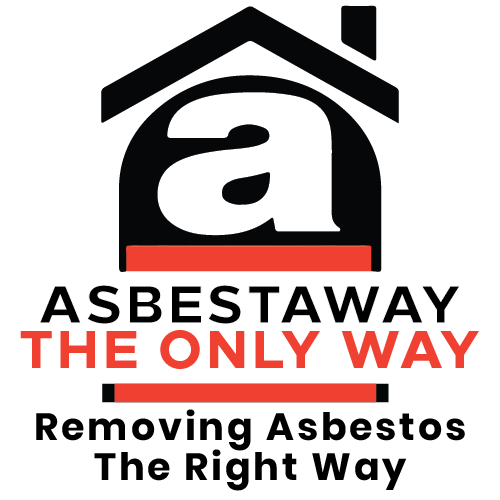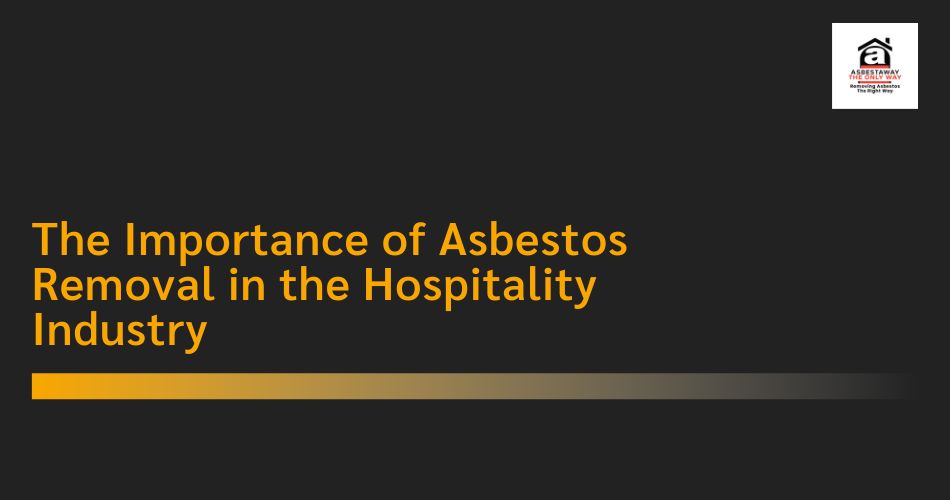Warehouse Safety: Understanding the Dangers of Asbestos Exposure in the Hospitality Industry
Health Risks Associated with Asbestos in the Hospitality Industry
Asbestos is notorious for its adverse health effects, which can manifest years or even decades after exposure. Even though it is no longer used in construction, the damage it caused before the ban is still felt today, particularly in industries like hospitality where many older properties still contain ACMs. The dangers of asbestos exposure are significant, and for those working in or visiting hospitality establishments, it is essential to understand these risks.
Key Health Risks of Asbestos Exposure:
- Asbestosis: Asbestosis is a chronic lung disease caused by the inhalation of asbestos fibres. The fibres accumulate in the lungs, leading to scarring that can restrict breathing and cause shortness of breath, coughing, and chest pain. Asbestosis can progress over time and can be life-threatening in severe cases.
- Lung Cancer: Long-term exposure to asbestos fibres significantly increases the risk of developing lung cancer. The fibres become embedded in the lungs and cause cellular damage that leads to the formation of cancerous tumours. Smoking combined with asbestos exposure compounds the risk of developing lung cancer.
- Mesothelioma: This rare and aggressive cancer affects the lining of the lungs, abdomen, or heart. Mesothelioma is almost exclusively caused by asbestos exposure, and it is often diagnosed years or even decades after exposure. Unfortunately, the prognosis for mesothelioma is generally poor, with most individuals living for only a few months to a couple of years following diagnosis.
- Other Respiratory Diseases: Aside from asbestosis and lung cancer, asbestos exposure can also contribute to other chronic respiratory diseases, including chronic obstructive pulmonary disease (COPD) and pleural plaques (scarring of the lung lining).
The presence of asbestos in the hospitality industry—whether it is in the form of ceiling tiles, floor coverings, or insulation—presents significant risks to both employees and guests. For workers, exposure to asbestos is a more direct concern, particularly in maintenance or demolition scenarios. Guests are also at risk, as older buildings may contain undisturbed asbestos materials that can release fibres into the air during renovation or day-to-day activities.
Warehouse-Based Strategies for Managing Asbestos in Hospitality Buildings
Developing an Asbestos Management Plan for Hospitality Venues
Asbestos management in the hospitality industry must be comprehensive and proactive. For any hospitality venue that may contain asbestos, it is essential to implement an asbestos management plan (AMP). The AMP is designed to identify, assess, and manage the risks posed by asbestos, and it should be updated regularly to reflect changes in the building’s use, renovations, or maintenance activities.
A strong asbestos management plan in the hospitality industry should include the following elements:
- Asbestos Survey and Inspection: A qualified asbestos assessor should conduct a comprehensive survey of the building to identify any materials that contain asbestos. This inspection should include both visible and hidden areas, such as ceilings, walls, plumbing, and equipment.
- Risk Assessment: Once asbestos-containing materials have been identified, a risk assessment should be conducted to determine the condition of the materials and the potential risk of fibre release. This assessment should factor in the likelihood of disturbance and potential exposure to workers and guests.
- Management and Control Measures: For any areas where asbestos poses a risk, effective control measures should be implemented. These may include sealing, encapsulating, or removing the asbestos materials. In certain cases, if the asbestos is in good condition and is not likely to be disturbed, it may be left in place but regularly monitored to ensure it remains safe.
- Documentation and Record Keeping: All inspections, risk assessments, and management strategies should be thoroughly documented. This documentation should be easily accessible to all relevant parties, including building owners, contractors, and employees. Record-keeping ensures that the venue remains compliant with regulatory standards and provides a history of asbestos management efforts.
- Employee Training and Awareness: Employees working in environments where asbestos may be present should be trained on the potential risks of asbestos exposure and how to safely manage or avoid these risks. Regular training should be provided to ensure that staff are aware of current safety protocols.
- Asbestos Removal and Disposal Plan: In cases where asbestos materials need to be removed, an asbestos removal plan should be developed, detailing how removal will be safely carried out, including the protective measures required for workers and the disposal methods for asbestos waste.
Warehouse Health and Safety Protocols for Asbestos Removal in Hospitality
Implementing Safe Asbestos Removal in Hospitality Venues
When asbestos-containing materials need to be removed from hospitality venues, it is critical that the work is carried out by licensed asbestos removal contractors. The process of removing asbestos requires careful planning and strict adherence to safety protocols to prevent the release of harmful fibres into the air. The following protocols should be followed during asbestos removal:
- Proper Containment: The area where the asbestos is being removed should be sealed off from the rest of the building. This can be achieved by using plastic sheeting to create barriers around the work area. The air in the area should be kept under negative pressure to ensure that any asbestos fibres released during removal are contained.
- Personal Protective Equipment (PPE): Workers involved in the removal process must wear appropriate personal protective equipment, including disposable coveralls, gloves, and a high-efficiency particulate air (HEPA) respirator. The PPE ensures that workers do not inhale asbestos fibres or come into contact with contaminated surfaces.
- Wet Removal Techniques: To minimise the release of asbestos fibres, wetting methods are often used when removing friable asbestos materials (e.g., insulation). The materials are soaked with water to keep the fibres from becoming airborne.
- Air Monitoring: Air monitoring should be conducted throughout the removal process to ensure that no harmful levels of asbestos fibres are present in the air. Clearance testing should be performed after the work is completed to ensure the area is safe to re-enter.
- Safe Disposal of Asbestos Waste: All asbestos waste must be sealed in leak-proof containers and labelled appropriately. It should then be transported to an authorised asbestos disposal facility in compliance with local regulations.
Asbestaway: Expert Asbestos Removal Services for the Hospitality Industry
Why Choose Asbestaway for Asbestos Removal in Hospitality Venues?
Asbestaway is a trusted provider of professional asbestos management and removal services across Australia. With a strong focus on safety, compliance, and customer satisfaction, Asbestaway is an ideal partner for hospitality venues in need of asbestos removal services. Their team of experienced and licensed professionals is dedicated to providing safe and efficient asbestos removal, ensuring that your venue is asbestos-free and compliant with all relevant regulations.
Services Provided by Asbestaway:
- Comprehensive Asbestos Inspections and Surveys: Asbestaway offers detailed inspections and surveys to identify asbestos-containing materials in hospitality buildings, providing a comprehensive report of findings and recommendations.
- Safe Asbestos Removal: Asbestaway’s licensed asbestos removal experts follow strict safety protocols to safely remove asbestos from your hospitality venue, ensuring minimal disruption to operations.
- Air Quality Monitoring: Asbestaway provides air quality monitoring during and after the removal process to ensure that the environment is free from harmful asbestos fibres.
- Waste Disposal and Decontamination: Asbestaway ensures that all asbestos waste is safely disposed of and that the work area is thoroughly decontaminated after removal.
- Ongoing Monitoring and Maintenance: For businesses that choose to leave asbestos materials in place, Asbestaway offers ongoing monitoring services to ensure that the asbestos remains safe and undisturbed.
By choosing Asbestaway for your asbestos management needs, you are ensuring that your hospitality venue is in safe hands. Their expertise in asbestos removal and commitment to compliance with Australian safety standards helps protect your workers, guests, and property from the dangers of asbestos.
Conclusion: Safeguarding Health and Safety in the Hospitality
In conclusion, asbestos removal is a crucial element in safeguarding the health and safety of both workers and guests in the hospitality industry. With many older buildings still containing asbestos-containing materials (ACMs), it is essential for businesses to implement a robust asbestos management plan that includes thorough inspections, risk assessments, and the safe removal or containment of hazardous materials. The risks of exposure to asbestos, including serious diseases like asbestosis, lung cancer, and mesothelioma, cannot be underestimated. By working with professional asbestos removal companies like Asbestaway, hospitality venues can ensure that they meet regulatory standards and provide a safe environment for all. Taking proactive steps to manage and remove asbestos ensures the long-term safety and success of hospitality businesses while protecting public health and maintaining compliance with Australian regulations.

